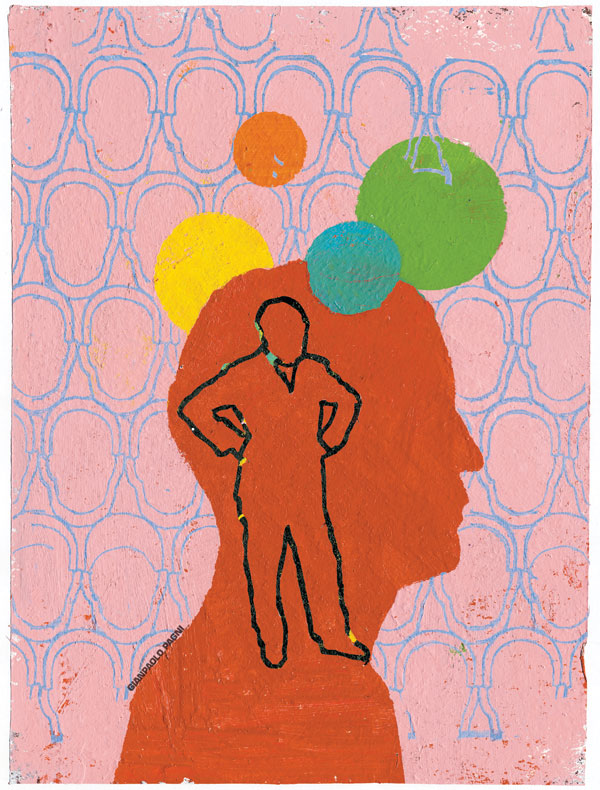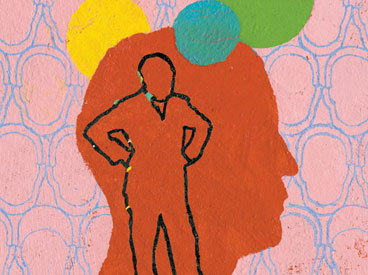
Brook Ochoa, 42, doesn’t fidget or squirm or bounce off walls like an 8-year-old child with ADHD. That’s primarily because she’s an adult, and adults tend to lack the hyperactivity part. The single mother of two has plenty of other symptoms, however. “I read seven books at a time, have never finished a project in my life, and when I get bored with a job I just walk away. I never knew until recently that that wasn’t normal. If it’s boring, I’m done.”
“Boring” is the kiss of death to adults with ADHD (attention deficit hyperactivity disorder or just ADD if they lack the hyperactivity component). And her inability to stay interested in any one subject for long may explain why Brook quit several jobs as manager and assistant manager of stores like Target and Wal-Mart. Brook is certainly competent enough to handle a heavy workload. She did well in school and earned a master’s degree in human resources; she can focus and finish assignments when they interest her. But around the house, she struggles with such simple tasks as washing dishes after meals. “Every dish in the house has to be dirty before I notice,” says Brook with a sigh. (See also “Symptoms of ADHD.”)
But at least she knows where her demons lie. For adults who were not diagnosed as children—and anyone who was already an adult when ADHD became widely recognized in children in the 1990s is unlikely to have been—having a label affixed to their struggles allows them to finally seek help. Perhaps even more important, it lets them make sense of a lifetime of bewildering experiences, of feeling hopeless or helpless in the face of their mental dysfunction, and, in many cases, wondering why they never achieved what they felt they could have.
“The more she described ADD the more the light bulb lit up for me,” recalls Robin Bellantone, 61, a mental health counselor in Portsmouth, New Hampshire. She had no idea adult ADD existed when she had the life-altering conversation during her graduate-school internship at the Massachusetts College of Art and Design in 1999. It was there that she heard a fellow staffer who specialized in working with artists with ADHD talking about the disorder: “It explained so much about my own history”—her inability to focus, her difficulty paying attention, her constant search for new stimulation.
Stories of adults who finally learn they have ADHD are as unique as the people themselves, but they have at least one thing in common: a sense that what was once shrouded in mystery is now lit with understanding, that a weight has been lifted and a puzzle solved. The National Institute of Mental Health estimates that 4.1 percent of adults have ADHD in any given 12-month period (compared to 9 percent of children). In the young, three times as many boys as girls have ADHD, but by adulthood the prevalence is the same in both sexes.
For adults, having the ADHD label affixed to their struggles allows them to finally seek help.
If it sometimes seems that everyone has some form of ADHD in today’s disjointed world of smartphones, tablets, and the like, the formal diagnosis is indeed on the verge of becoming more common. The newest edition of the American Psychiatric Association’s Diagnostic and Statistical Manual of Mental Disorders, scheduled for release in May 2013, is expected to loosen the diagnostic criteria for the disorder substantially, lowering the number of symptoms required. (See chart, “Symptoms of ADHD,” next page.) But, even so, there are misconceptions about what it takes to qualify. For example, inability to focus and being easily distracted—with no other symptoms—wouldn’t be enough. You do not have ADHD if you simply like to flit from task to task at work. You do not have ADHD if you get bored doing housework. You do not have it if your mind wanders when reading dense, boring prose on a topic you have no interest in; if you get fidgety during boring sermons or hours-long presentations from a financial planner; or if you start reading another book or magazine before you finish the previous one you’ve started.
Moreover, the symptoms must appear in at least two settings: If you only show these behaviors at work, then you do not have ADHD. You probably just don’t like your job.
Still, the condition is underdiagnosed. Today, for every adult whose ADHD has been identified, there are at least three adults whose ADHD has not, according to Dr. Mary Solanto of Mount Sinai Medical Center in New York. Underdiagnosis reflects that adults can compensate for ADHD by choosing jobs that fit their brains—for instance jobs that present constant new challenges rather than jobs where one does the same task over and over.
That probably explains why Ruth didn’t receive her diagnosis until age 74. As a young woman she had few friends, felt isolated, and often blurted out what she felt without much thought for the consequences. Then, after marrying and raising a family, Ruth—who did not want her full name used—went to nursing school at age 46. She adored her new career. “I was busy all of the time. It’s never boring,” she says.
Become a Saturday Evening Post member and enjoy unlimited access. Subscribe now




Comments
Thanks for this excellent article.
Many have concerns about the diagnosis and treatment for ADHD. The problems with ADHD treatments and meds circle around three essential themes.
The three main problems:
1. ADHD Diagnosis is superficial at best, based often on appearances, and not related to the many excellent peer reviewed findings in brain scans and brain research for more than 20 years. The DSM-4 is outdated in that it isn’t connected with brain science, and DSM 5 looks like it will provide no significant improvement with the perpetuation of these oversights: http://www.corepsych.com/2010/02/psychiatric-diagnosis/
2. Medication treatment strategies remain capricious, often whimsical, not based upon clear expectations or scientific data: http://www.corepsych.com/2011/05/adhd-medication-dosage/
3. Far too often drug interactions and comorbid conditions remain misunderstood, not identified and ineffectively treated: http://www.corepsych.com/2012/10/adhd-insights-lets-change-the-rules/
Many fresh answers arise with available, relatively inexpensive, data-driven tests that measure a multitude of comorbid biomedical conditions that interfere with medication treatment responses. Dopamine can’t treat serotonin problems, and serotonin can’t treat dopamine [ADHD] problems – in fact each one used incorrectly will make the other comorbid condition regularly worse – and even dangerous.
All these matters are explained in my new book “New ADHD Medication Rules – Brain Science & Common Sense.” In “New Rules” I agree: thousands are treated without considering either brain science or common sense.
cp
Dr Charles Parker
http://www.corepsych.com
“New Rules” here: http://www.bit.ly/rulesbooks
My husband is ADHD, and has a job where he can flit around the office from one task to the next as he has several ‘hats’ to wear, but it took him well into adulthood before he found that job and has been able to stick with it. For my daughter, now 18, the problem with her ADHD is that, to stay interested, work needs to be stimulating, with enough variety to keep her focussed. Unfortunately she also has Autistic Spectrum Disorder, which requires routine, routine, no surprises and routine! I can see that her finding a job after college is going to be quite difficult indeed.
Thank you for putting a human face on this condition. A reason only 1 in 4 adults with ADHD get support is because of the misconceptions and lack of understanding. ADHD knows no socio-economic or intellectual barriers. Smart, creative people can hide the overwhelm and “brain swirl” through shear effort. Unfortunately this effort comes at a great cost of added stress and the additional health challenges related to increased stress.
To my mind, it is the sneering of the dedicated disbelievers who constitute the nastiest part of being adult ADHD. Would they dare to tell the person with a club foot or a cleft palate that they could dance or sing if they just tried a bit harder? Or tell an Alzheimer’s patient that he is just faking his memory loss?
In my 60s I am in the unenviable position of having had “lots of potential” since grade school, never grasping why the projects I could see so clearly never came to fruition. Diagnosed at 58, I understand the problem now, but it’s way too late for me. But we can at least help the younger people who have their lives ahead of them.
Thank you for a well written article that vividly describes what having ADHD can be like for adults. And it’s true – many adults are not diagnosed until later in life. I found out myself at age 42 while I was having my daughter evaluated.
While I wince at the term “mental illness”, I suppose that it is technically correct since ADHD is considered a disability under Federal Law.
I do challenge the notion that children outgrow ADHD and that adults tend not to have hyperactivity. I believe that children, as they mature, learn to manage their symptoms more effectively and may appear to have outgrown their ADHD. Also, adults tend to be better at hiding their symptoms than children.
As far as the hyperactivity is concerned, again I believe that it is merely channeled differently, showing up as perhaps excessive talking or juggling too many projects at once.
Thank you again for an excellent article.